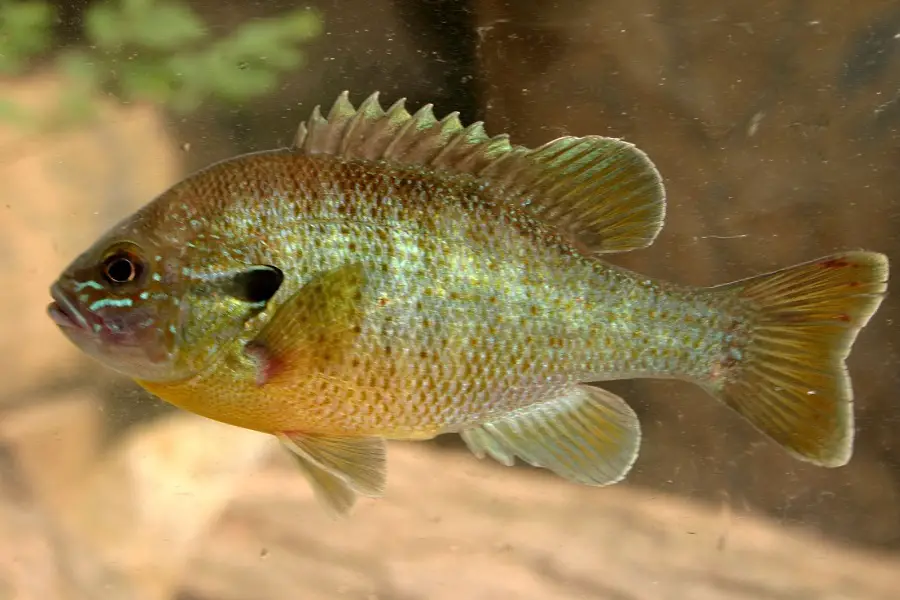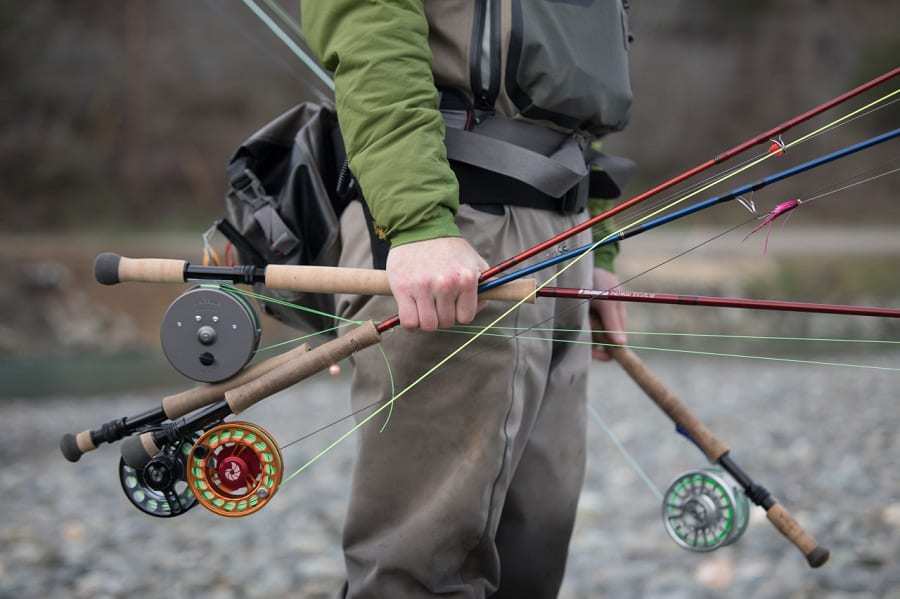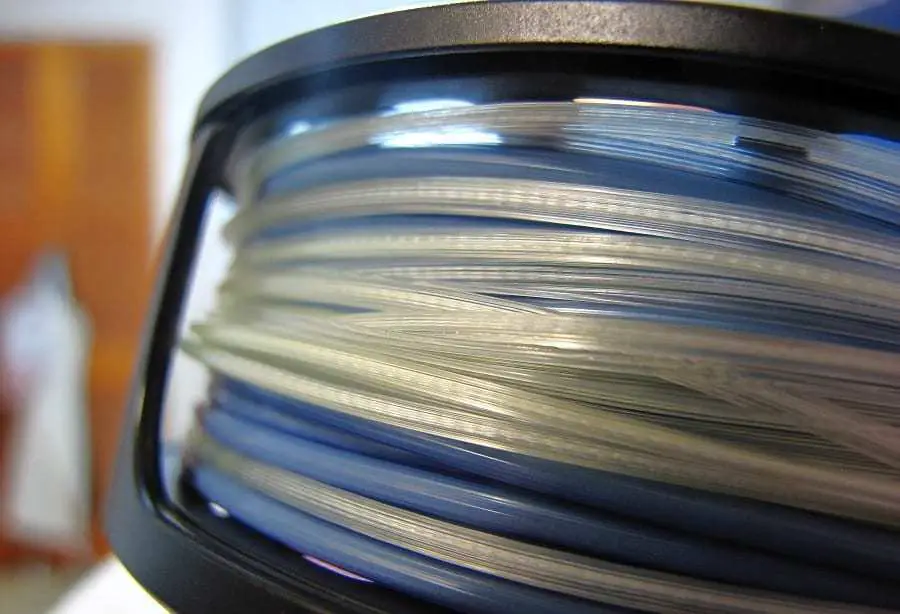If you’re new to fishing or just looking for a fun and easy fish to catch, bluegill might be the perfect choice for you.
Bluegill is a freshwater fish species typically found in North American rivers, lakes, and ponds. It is well-known for its distinctive blue and green markings on its gill covers, as well as its characteristic black spot on the posterior edge of the dorsal fin.
They are relatively small, making them easy to handle and perfect for beginners.
They belong to the sunfish family and get their name from their unique blue gill cover. Anglers appreciate bluegills for their challenging fight and delectable taste.
Essential Bluegill Fishing Equipment

Having the right equipment is crucial when embarking on a bluegill fishing adventure. A lightweight rod and reel that works well for this type of angling are necessary items.
To increase your chances of success while bluegill fishing, it’s essential to choose light-colored and low-visibility fishing lines as these fish possess keen eyesight.
- Fishing rod and reel: Choose a lightweight rod and reel that is suitable for bluegill fishing.
- Fishing line: Bluegill have keen eyesight, so choose a light-colored, low-visibility fishing line.
- Hooks: Use small hooks, size 6 to 10, to catch bluegill effectively.
- Bait: Bluegill love live bait such as worms, crickets, and grubs.
- Bobbers: Use bobbers to keep track of when the fish are biting and to help with the accuracy of your cast.
Using small hooks in sizes ranging from six to ten can also enhance your chances of capturing these scrappy fighters effectively.
Live bait such as worms or crickets is an excellent choice for enticing these fish. Additionally, bobbers can come in handy for keeping track of when the fish are biting and improving casting accuracy.
Bluegill Fishing Rods and Reels

To detect bites effectively, it is recommended to use a lightweight and flexible bluegill fishing rod.
Spinning reels are versatile and easy to use, making them a popular choice for bluegill fishing enthusiasts.
Using ultralight tackle is highly advantageous since bluegills are smaller fish that require finesse during reeling in.
When choosing bluegill fishing equipment, consider the length and power of the rod and gear ratio of the reel for better results.
With quality equipment investment, you can have an enjoyable experience while catching scrappy fighting panfish.
Bluegill Fishing Line
A monofilament line with a test strength of 4-8 pounds is ideal for catching bluegill effectively.
Braided lines or fluorocarbon lines are also suitable options but may require more skill to handle. When selecting your equipment, consider matching the line strength to your rod and reel.
Using light-colored, low-visibility fishing lines can help you catch more fish without spooking them. Investing in quality equipment can improve your chances of success and make your fishing experience more enjoyable.
Bluegill Fishing Hooks
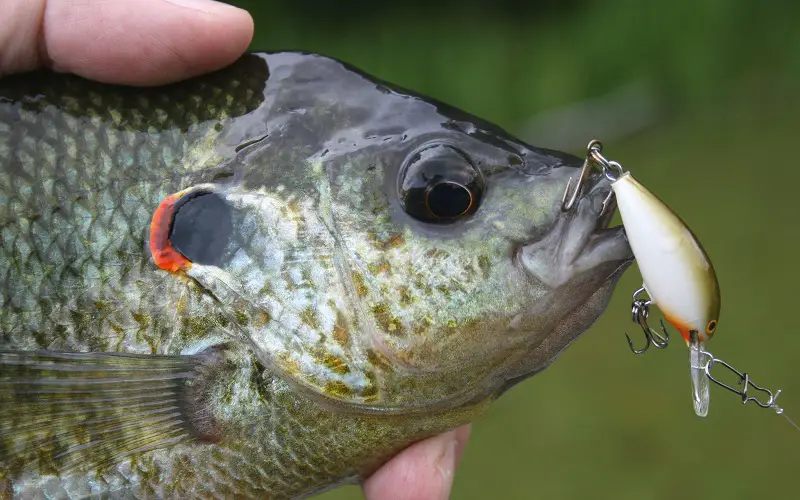
To catch more bluegill, one must choose the right hooks based on their size and style.
While targeting smaller fish, it’s best to use smaller hooks ranging from size 6-10, and for larger fish, bigger hooks ranging from size 2-4 should be used.
J-shaped hooks are widely popular among anglers as they not only increase catch rates but also make it easier to hook the fish securely.
Circle hooks can also reduce the risk of gut-hooking the fish during a fight. Remember to match your hook sizes with your targeted fish species for optimal performance.
Bluegill Fishing Lures and Jigs
Light-colored small jigs or live bait like crickets or worms are effective ways to attract bluegill.
To achieve optimal results while fishing for bluegill, it’s recommended that you use an assortment of different types of lures and jigs.
It’s best to choose the appropriate size and weight of the lure or jig based on specific water conditions like water depth and temperature.
By experimenting with different types of artificial lures like poppers or grubs, you’ll see what works best for your angling style.
How to Catch Bluegill
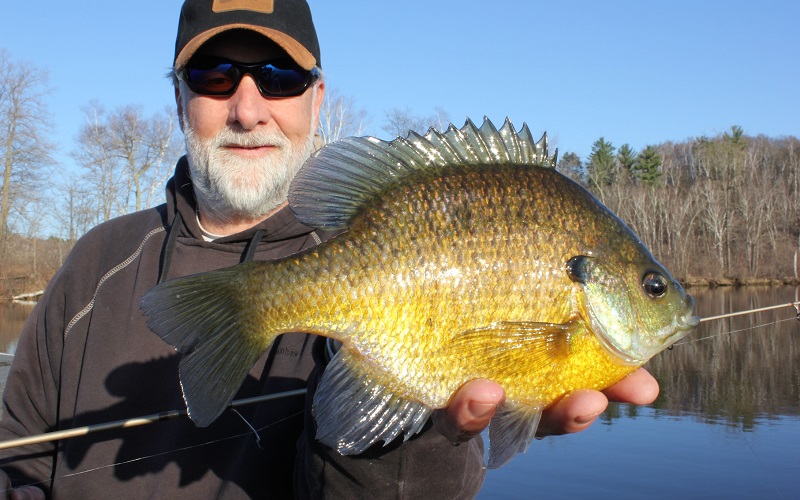
Use light equipment like a rod and reel with small hooks which will allow you better control when reeling them in.
You should also select the right bait which could be anything from worms to artificial lures like poppers or grubs.
Look for areas where bluegill might be frequent – vegetations, shoreline brush piles, or deeper waters are some good spots to start fishing.
Try experimenting with different baits and use seasonal bait like grasshoppers during the summer months.
Fishing for bluegill shouldn’t always be about catching the biggest ones; sometimes using smaller lures and hooks with live bait that imitate aquatic insects will work wonders.
Best Bait for Bluegill
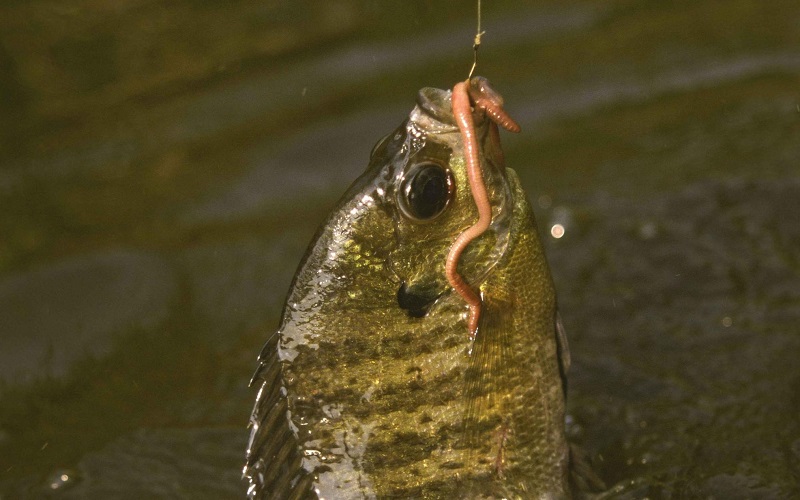
While live bait like worms, crickets, and grasshoppers are popular among anglers, using small jigs with light-colored bodies can also prove to be effective in catching bluegill.
Worms and nightcrawlers are some of the classic choices for catching bluegill.
But if you’re interested in exploring other options, experimenting with different baits like small lures or poppers can help you find what works best for you in your specific location and condition.
Bluegill Lure and Jig Fishing Techniques
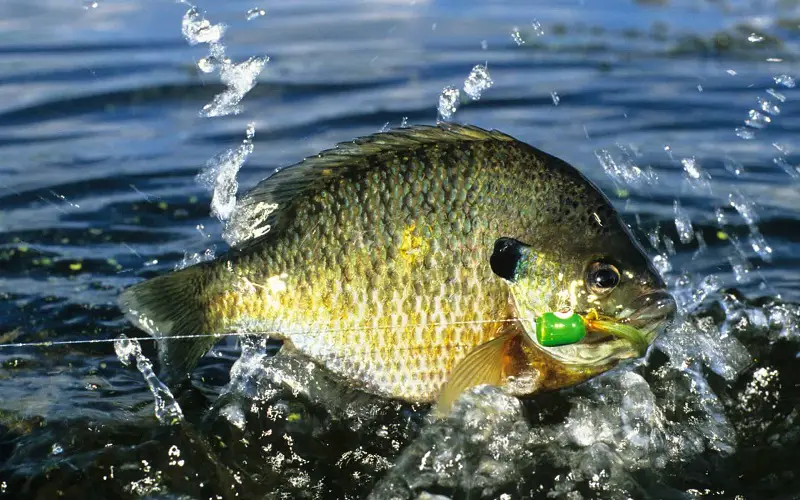
Start by selecting the appropriate size and color option that will attract these fish.
To mimic natural prey movements, try using slow and steady retrieval techniques or change things up by alternating between twitch-and-pause or lift-and-drop methods.
Experiment with various depths to find those sweet spots where bluegill gather around weed beds or vegetation.
Fly Fishing for Bluegill Tips and Techniques
When it comes to fly fishing for bluegills in clear water environments with light lines and fly rods around weed beds or lily pads is a great way to catch them.
Choosing the right equipment can attract them easily. Locating bluegill habitats can help anglers to catch bigger fish by spotting the spawning bed in shallow water near weed beds, vegetation, brush piles, or stumps.
Understanding their behavior and feeding habits such as using slow and steady retrieval techniques can also help improve success rates during the early summer months.
Best Time To Catch Bluegill

During the warm summer months, from late spring to early fall, it’s the perfect time for bluegill fishing.
Early morning and late afternoon are the ideal times when bluegills tend to feed more. While looking for a good spot, an angler should search for areas with cover such as weed beds or fallen logs where bluegill may be hiding.
Changes in water temperature and barometric pressure can influence the activity of these fish. To enhance your chances of catching them, you can try fishing near the shoreline or on spawning beds.
During the early summer months, bluegill moves to shallow waters for spawning activities where anglers can catch them using small jigs or bobbers.
In deeper water during summers, an angler can use live bait like earthworms or crickets as well as small artificial lures like poppers or grubs.
Where to Catch Bluegill Fish
Bluegill fishing is most successful in ponds, lakes and slow-moving streams where they reside.
Areas with vegetation like weed beds or lily pads are ideal since they provide a breeding ground for aquatic insects and small fish making it easier for bluegill to feed.
Structures like logs and rocks present an excellent hiding spot for them too. Additionally using live bait such as worms or crickets is highly effective when trying to catch bluegills.
Conclusion
To sum it up, bluegill fishing is a great way to spend your time outdoors and enjoy the beauty of nature.
Remember to be patient and persistent when trying to catch bluegill, as they can be quite elusive at times.
With enough practice and experience, you will soon be able to master this art and enjoy some delicious meals with your catch.
References:


